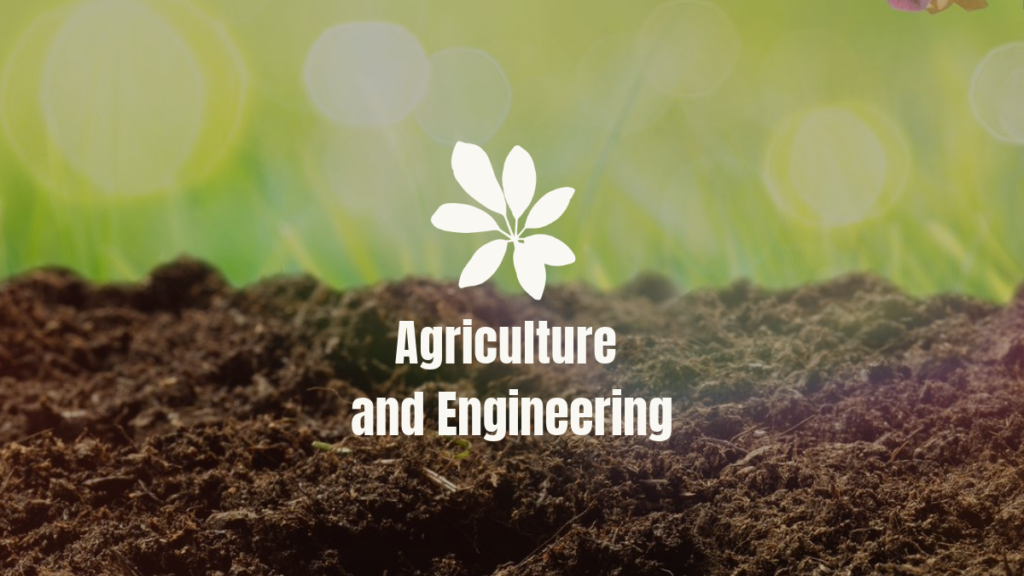Agriculture and engineering are two seemingly distinct disciplines that, when combined, offer transformative solutions for global food security, sustainability, and economic growth. Over the years, technological advancements have redefined agricultural practices, with engineering playing a pivotal role in optimizing efficiency, reducing waste, and enhancing productivity. This article delves into the relationship between agriculture and engineering, highlighting how their synergy is shaping a sustainable future.
The Evolution of Agriculture with Engineering
Traditionally, agriculture was heavily reliant on manual labor and rudimentary tools. However, the advent of engineering innovations has revolutionized the sector. From mechanized farming equipment to precision agriculture, these advancements have streamlined processes and maximized yields.
- Mechanization in Agriculture
Engineering has replaced traditional farming tools with sophisticated machinery such as tractors, harvesters, and seed drills. These machines not only reduce labor dependency but also increase the speed and scale of operations. - Irrigation Engineering
Efficient water management is crucial for farming. Techniques like drip irrigation and sprinkler systems, developed through engineering, ensure water is distributed evenly and used judiciously. Advanced irrigation systems also mitigate the risks of water wastage and soil erosion. - Post-Harvest Technologies
Engineering innovations in storage, packaging, and transportation have minimized post-harvest losses. Temperature-controlled storage units and automated sorting machines ensure that agricultural produce reaches markets in optimal condition.
Precision Agriculture: Engineering Meets Data
Precision agriculture represents a cutting-edge approach where engineering and data science converge to optimize farming practices. Using GPS technology, drones, and IoT devices, farmers can monitor soil health, crop growth, and weather conditions in real-time.
- Soil Sensors: Engineering advancements have made it possible to analyze soil fertility and nutrient levels with pinpoint accuracy.
- Drones and UAVs: Equipped with high-resolution cameras and sensors, drones provide aerial imagery to identify crop stress and pest infestations.
- Smart Machinery: Automated equipment, guided by GPS, ensures accurate planting, fertilization, and harvesting, reducing resource wastage.
Sustainable Farming Through Engineering
Sustainability is a critical concern in modern agriculture, and engineering solutions are at the forefront of addressing environmental challenges.
- Renewable Energy in Farming
Solar panels and wind turbines are now being integrated into farms, reducing dependency on fossil fuels and lowering carbon footprints. - Waste Management Systems
Engineering innovations have led to the development of biogas plants and composting units, enabling farmers to convert agricultural waste into useful resources like energy and fertilizer. - Hydroponics and Vertical Farming
These advanced farming methods, supported by engineering, allow crops to grow in controlled environments with minimal land and water usage, making them ideal for urban settings.
Challenges in Agricultural Engineering
Despite its promise, the integration of engineering in agriculture is not without challenges. The high cost of advanced machinery and the need for technical expertise often hinder small-scale farmers. Additionally, ensuring equitable access to these technologies in developing countries remains a significant hurdle.
The Future of Agriculture and Engineering
The future of agriculture lies in the continued collaboration with engineering. Emerging technologies like artificial intelligence (AI), machine learning, and robotics are expected to revolutionize the sector further. Autonomous tractors, AI-powered irrigation systems, and blockchain for supply chain transparency are examples of how engineering is shaping the next era of agriculture.
Empowering Agricultural Innovations with AI
While engineering provides the physical tools for agricultural advancement, artificial intelligence offers the intelligence layer. AI can analyze vast amounts of data to predict crop yields, optimize planting schedules, and identify potential risks. Platforms like WebsiteBuilder.ai, an AI-powered website creation tool, can empower agricultural businesses to establish an online presence effortlessly. By creating professional websites, farmers and agribusinesses can showcase their innovations, reach wider markets, and stay ahead in the digital age.
Conclusion
The fusion of agriculture and engineering has unlocked unprecedented opportunities to enhance productivity, sustainability, and economic resilience. As the world grapples with challenges like climate change and population growth, this partnership holds the key to ensuring global food security. By embracing technological advancements and leveraging tools like WebsiteBuilder.ai, agricultural stakeholders can pave the way for a smarter, more sustainable future.
Let innovation and technology drive the transformation of agriculture, ensuring prosperity for generations to come.
